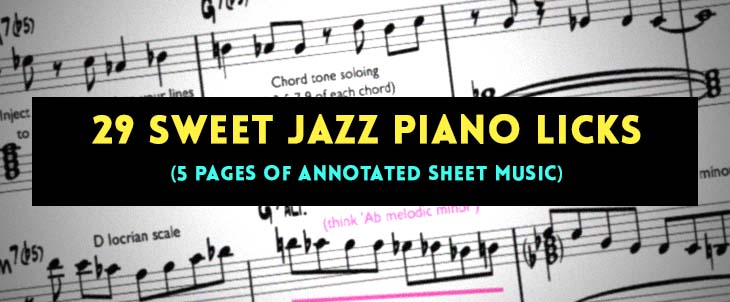Jazz Scales Explained
Today I'm going to answer a jazz scales question I received:
"Hi Julian, how do you know which scale to play when you see a chord? And how do I know which scale to play over a chord progression?"
Thank you for this great question.
First, know that the chord and the melody are built from the same scale...
So the melody plays one note at a time from that scale...
And the chord plays multiple notes together - also taken from that same scale...
That's why the chord and the scale are always related - they're built from the same 7-note scale...
Now in jazz it's common to change scale with every single chord. Every new chord in the chord sheet implies a new scale, different to the previous chord.
Key Point:
As a jazz pianist, you figure out which scale to play by looking at the chord symbol...
The notes in your scale have to agree with the notes in the chord (otherwise the two will clash)...
So to figure out which scale to play - do the following:
1. Start with the chord tones:
Start your scale with the 4 chord tones of the chord - which are 1 3 5 7:
E.g. D min 7 = D F A C...
Or E7 = E G# B D...
Or Bb maj 7 = Bb D F A.
2. Next, add a whole-step:
To fill in the 3 missing notes (2, 4, and 6) just add a whole-step above the chord tones.
So if the chord symbol is C min 7 - start your scale with C Eb G Bb...
Then add a whole-step above C, Eb and G - which gives you D, F and A:
Your scale is C D Eb F G A Bb - which is called C Dorian scale.
Free Resource: Download my '29 Jazz Piano Licks' sheet music.
Let's take another example:
If the chord symbol is C maj 7 - start your scale with the chord tones:
1 3 5 7 = C E G B
Next, add a whole-step above the 1, 3 and 5 - which gives you D F# A:
Your scale is C D E F# G A B - which is called C Lydian scale.
One last example...
Before reading on - try to answer this yourself:
Which notes would you play over a 'C7' chord?
Recommended Lesson
'Jazz Improvisation Explained in 18 Minutes'
These are the most-used improvisation techniques that you need to know about:
Free Resource: Download my '29 Jazz Piano Licks' sheet music.
Answer:
Let's start with the chordal tones:
1 3 5 7 = C E G Bb.
Next, add a whole-step above each the 1, 3 and 5 - which gives you D F# A:
Free Resource: Download my 'Jazz Piano Chord Voicing Guide' (11 pages).
What's Popular Now
'29 Jazz Piano Licks' sheet music

'Chord Voicing Guide for Jazz Piano'
This 11-page guide shows you chord voicings that professional Jazz pianists use.
6 pages of sheet music. Shares my top chord progressions and chord voicings.
One page cheat sheet. Shows you all common Jazz chords notated clearly:
